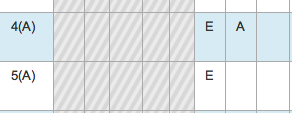Empty seats lead to less funding

Even though skipping out on one day of school may not seem much for students, but now under House Bill 5, school funding is partly based on attendance rates.
October 7, 2014
Until 2013, good attendance was encouraged just to maximize student learning. But in addition to learning, there is a new incentive for schools to get higher attendance rates. Because of House Bill 5, new policies have been put in place in Texas that base school funding on the percent of students at school.
“Schools receive funding based on the number of students that they have and how often those students come to school,” Principal Chris Mayfield said. “And so as a school district, everything that we do that costs money, like air conditioning, like paying teachers’ salaries, desks, different things that would be things that the school district would purchase is obviously impacted.”
More students attending school will qualify the district for more state funding. And because of reductions in school funding in recent years, Texas districts are likely to push their students to attend classes more than ever.
“All districts in the State of Texas are funded on student attendance, not enrollment,” Superintendent Ted Moore said in a letter to the district in September. “This means that a district could have 4,000 students enrolled, but if attendance averages 90 percent, the district would only be funded for 3,600 students. Based on the state revenue stream for Lovejoy, a loss of 400 students due to absences would cost this district ~ $3.2 million in state funding.”
HB 5 requires all Texas schools to have at least a 90 percent attendance rate. For the high school, average attendance was measured at 96 percent during the 2013-2014 school year.
“I think there’s definitely room for improvement that we could certainly get better at, but at the same time, if you were to compare us with other high schools across the state, 96 percent is a strong number,” Mayfield said. “But again I think that in talking to students, and seeing some of the reasons they’re not in school, I think it is an area that we could certainly get better at.”
There are circumstances when a student can be off campus without being counted absent. Some situations can include missing school for the observation of religious days, for a required court appearance, or for attending a military honors funeral.
“There are some things that we don’t count against the student,” Mayfield said. “A college visit would be one, another one is extracurricular, like if the student were actually a part of school but weren’t here, whether that was a field trip or whether that was with an athletic team. They’re not really absent, they’re participating with school.”
While administrators understand that missing some classes is inevitable, they will continue to encourage students to attend school as much as possible, for the students’ own benefit.
“It’s hard for students to learn if they’re not in school,” Debbie Ratcliffe of the Texas Education Agency said to KUT.org in 2013. “If they have a lot of absences, the gaps in their knowledge make it difficult for them to earn good grades. So I think [the new policy is] just another way to encourage children to be at school.”


